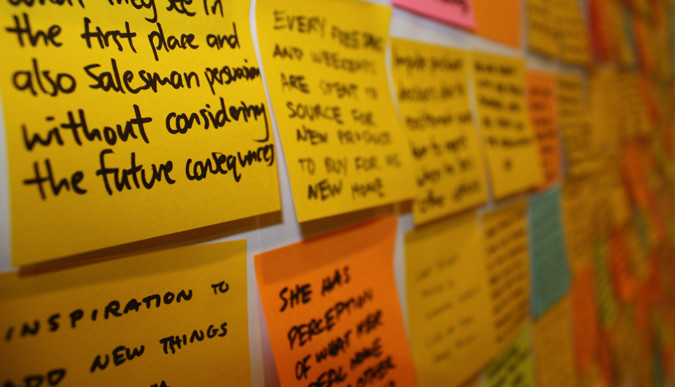
How To Use Design Thinking In Human Resources & Talent Acquisition
In most human resource and people departments, when we set strategy, we typically look at historical and backward facing data. This information, while important, doesn't give us the entire picture of how current employees will act in the future and it certainly doesn't give us an idea of what new employees will want. Most of our decisions or bets are risky and are made based on intuition and instinct, instead of evidence.
Design Thinking, founded by Tim Brown, David M. Kelly and Roger Martin, is a design focused thinking process that applies tools and methodologies from the world of design, which shifts focus to human behaviors. In design thinking you will find three major pillars or stages:
- Invent a Future - form a few theories about what employees might want, but don't have. Immerse your team within their lives and instead of asking them about existing services or benefits, observe and ask questions about their behaviors.
- Test Ideas - use iterative prototyping to test out product and services that meet minimum requirements or what design thinking calls "good enough". Conduct a few experts to see how employees or your talent community responds. Adjust the service or benefit, price, and positioning based on the feedback you receive.
- Bring To Life - take the new service, benefit, or product and bring it to life. When you find something that resonates with employees and is successful, identify the activities, capabilities and resources your department will need to produce, distribute, and "sell it" to your leaders, employees and talent communities.
For example, when Razorfish started to focus on branding better with technology talent across our North American offices, we decided to go into the market and observe what folks perceived about Razorfish and its competitors for technology talent. What we found was that Razorfish, although always considered as a great potential employer, was far behind on the preference list of targets that included startups, technology companies like Facebook and Google, and other digital agencies. We found that our technology credibility was not strong in the technology talent marketplace, while the feedback internally and with our customers was that we had some of the smartest, diverse, and hardworking technologists in the world.
Using the concept of design thinking, we took this behavioral information and decided to "Test" out a new idea with a partner called HireNuture. HireNuture is a technology and services company that curates relevant content from the web, formulates newsletter like emails, and sends it out to your communities. Our goal was to show that Razorfish was indeed a premier company for technologists and while we were working on some cool stuff and had done some cutting edge work, that we also knew about and delivered critical and useful information to the technology community. We ran a test with HireNuture for 3 months and found that we had great engagement numbers, a very low unsubscribed rate, and the solution provided us with unprecedented information on how talent was engaging with Razorfish and our content. This helped to directly inform our recruiting strategy and process, plus allowed us to target specific talent for current needs we had within our tech teams. We then launched the monthly newsletter across our entire technology talent community - both external and internal, thus further bringing the idea to "life".
By using Design Thinking and its concepts, we were able to Invent a Future where we delivered specific and relevant information to our technology talent community, Test Ideas in partnership with HireNuture and then Bring It To Life by launching across all our technology talent communities. The next phase will be testing and launching the idea across other disciplines here at Razorfish.
Design Thinking can be a very successful way for HR, People, and Talent departments to really make an impact and help a company to advance its strategies to attract, retain, and engage talent.
How can you use design thinking in your HR department?


Helping people realise their potential
6ySeen this Vanessa Shaw?
Enterprise Account Management
7y"when we set strategy, we typically look at historical and backward facing data. This information, while important, doesn't give us the entire picture of how current employees will act in the future "... Well said.
Tony Robbins Strategic Intervention Coach, 6 Human Needs Coach, Certified Hypnotherapist, NLP Practitioner, Teacher of Presence, Reiki Master
7y"Most of our decisions or bets are risky and are made based on intuition and instinct, instead of evidence". So true. The idea of improving our method (totally unrelated industry) or putting more emphasis on method is very powerful. Cool article Anthony! Thanks so much for posting!
Human Resources Leader/Entrepeneur/Retired Soldier
7yLove the article, and truly believe that HR professionals of today must be creative and investigative. The world/workforce is changing perhaps faster than we can keep up. So many organizations doing the same ol'. And of course expect things to turn out differently. I think many times the organizational culture stifles risk taking. In many instances if the HR person has the audacity to try new things (some will work, others won't) the senior leadership can perceive that person as a failure. In my book, the lack of senior leaderships willingness to take risks hamper the creativity needed for todays workforce.
CEO D.R.M International Asia Pacific Author and Writer
8yI agree Ray